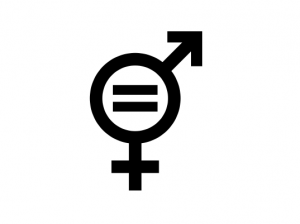
Two recent studies expose gender inequality within hiring and support of U.S. medical school faculty. (Source: Wikimedia Commons)
Two studies recently published in the Journal of the American Medical Association (JAMA) illuminated striking gender disparities in the experiences of academic faculty at U.S. medical institutions. The first study, led by Anupam Jena, M.D., Ph.D. of Harvard Medical School, examined roughly 91,000 physicians appointed to U.S. medical schools as professors during 2014 (1).
The study acknowledged physician-related factors including sex, age, years of experience, specialty, number of publications, success with grant funding, and clinical trial research. Its primary finding was that although women represented half of U.S. medical school graduates, they make up only a third of hired physicians (30,464 women out of roughly 91,000 total physicians) (1).
Furthermore, only 11.9% of women managed to achieve the promotion to full professor, while 28.6% of men attained this position (1). Statistics regarding the number of publications held are similar. Women physicians held an average of 11.6 publications, while men physicians held an average of 24.8 (1). Similar trends were observed for recipients of grants from the National Institute of Health (NIH) as well as for publicized clinical trials.
Importantly, the researchers confirmed that these sex differences existed after accounting for disparities in other variables. Thus, the study could show that gender, instead of age, for example, was in fact correlated with the gender distribution of full professors.
Dr. Jena and his team offered several plausible explanations for this data, such as the lack of women mentors and insufficient acknowledgement from senior colleagues, as well as discrimination and unfair distribution of medical school resources.
The team summarized their findings by stating, “These challenges may adversely affect research productivity and may also explain why even after adjusting for research productivity, women are still less likely than men to be full professors” (1).
A second study headed by Robert Sege, M.D., Ph.D. of Health Resources in Action supported this theory of unequal resource distribution. This study focused on analyzing gender disparities regarding institutional support awarded to junior biomedical research scientists (1). In other words, it examined “start-up support,” assistance provided by the medical school to aid new scientists in their research endeavors. The term “support” was defined here to include salary, hired assistant researchers, equipment, and supplies (1). Data was received from employing U.S. medical institutions and was composed of applications submitted between 2012 and 2014.
Dr. Sege’s team found that women represented under a third (30%) of all funded biomedical researchers, although differences between males and females regarding graduate degrees attained were negligible. More specifically, the team discovered that the monetary value of start-up support varied dramatically according to gender: the average value for men was $889,000 while that for women was $350,000 (1).
Dr. Sege et. al expressed their desire for further investigation into this matter by saying that “this first look suggests the need for systematic study of sex differences in institutional support and the relationship to career trajectories” (1).
References:
- The JAMA Network Journals. (2015, September 15). Sex differences in academic faculty rank, institutional support for biomedical research. ScienceDaily. Retrieved September 19, 2015 from www.sciencedaily.com/releases/2015/09/150915135417.htm